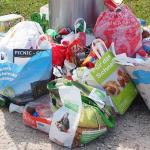
The letter issued by the Russian environmental authority (RosPrirodNadzor) explains the difference between waste “utilization” and waste “neutralization”. It also explains why product manufacturers and importers will not fulfil their extended producer responsibility obligations via waste neutralization (as opposed to waste utilization).
Based on the definitions of waste “utilization”, “recycling”, “regeneration” and “recuperation” provided by the Federal Law on Industrial and Consumption Wastes as well as in the state standard GOST 30772-2001, the purpose of waste utilisation is re-use of such waste for the purposes of product manufacture, performance of works or rendering services. This re-use includes the use of wastes for the same purpose, recuperation of valuable components as well as other operations that result in bringing wastes to the level of secondary raw materials.
At the same time, the aim of waste “neutralisation” is to mitigate the negative impact of such waste on human health and the environment and/or to decrease the total weight of the waste, rather than waste re-use or recycling. Waste incineration is a thermal process of waste oxidising with the aim to decrease the volume of waste and/or to generate ash or energy – which comes under the definition of waste neutralisation.
Since any thermal treatment of waste results in waste neutralization and in a change of waste class, the terms “utilization” and “neutralization” are fundamentally different and therefore, it is not possible to fulfil waste utilization norms for manufacturers or importers by performing waste neutralization (including incineration).
Law: Letter No. VS-10-02-36/6393 dated 28 March 2017 “Concerning the fulfilment of utilisation norms by way of thermal treatment of wastes”





